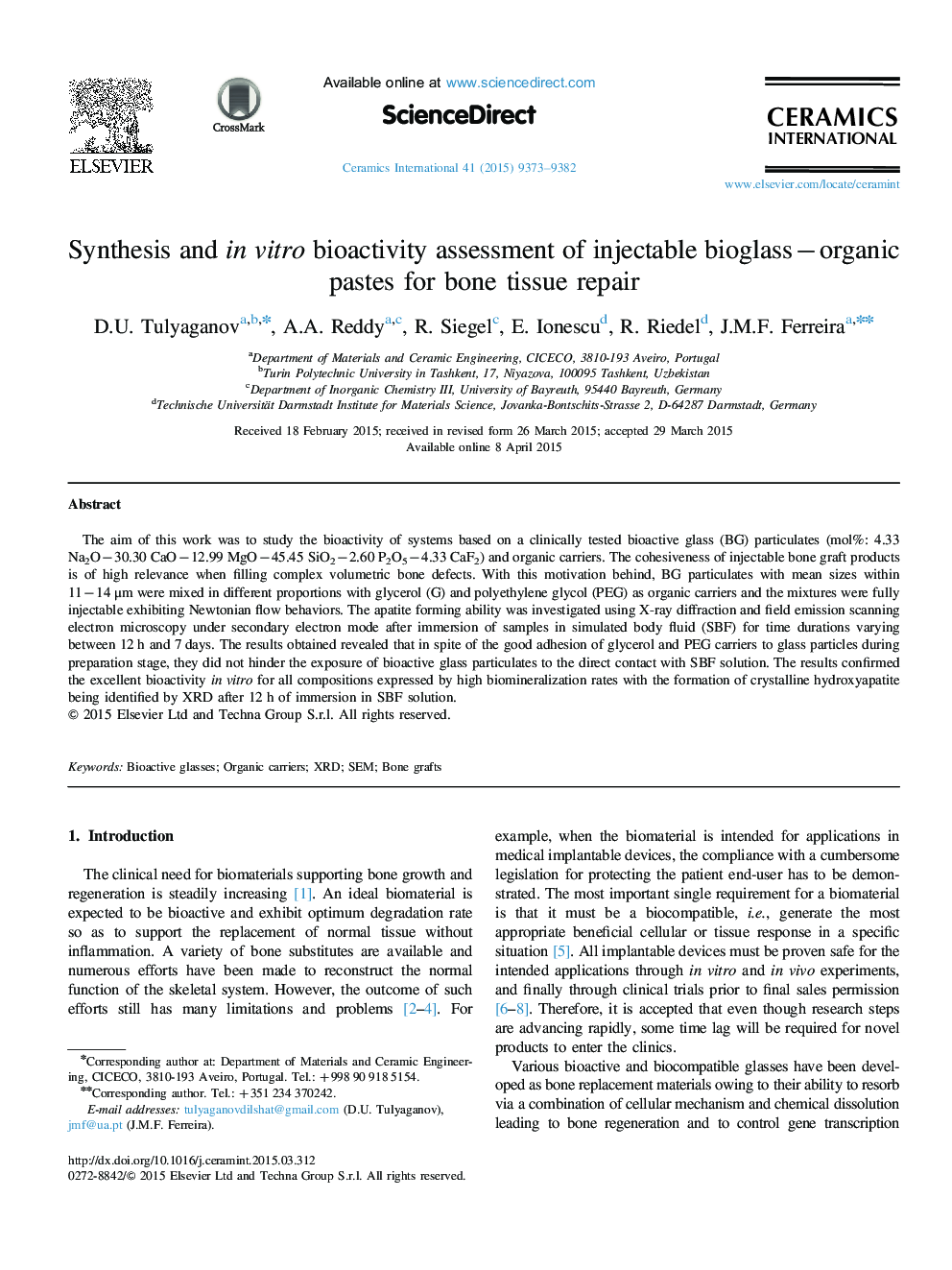| کد مقاله | کد نشریه | سال انتشار | مقاله انگلیسی | نسخه تمام متن |
|---|---|---|---|---|
| 1460209 | 989602 | 2015 | 10 صفحه PDF | دانلود رایگان |

The aim of this work was to study the bioactivity of systems based on a clinically tested bioactive glass (BG) particulates (mol%: 4.33 Na2O−30.30 CaO−12.99 MgO−45.45 SiO2−2.60 P2O5−4.33 CaF2) and organic carriers. The cohesiveness of injectable bone graft products is of high relevance when filling complex volumetric bone defects. With this motivation behind, BG particulates with mean sizes within 11−14 μm were mixed in different proportions with glycerol (G) and polyethylene glycol (PEG) as organic carriers and the mixtures were fully injectable exhibiting Newtonian flow behaviors. The apatite forming ability was investigated using X-ray diffraction and field emission scanning electron microscopy under secondary electron mode after immersion of samples in simulated body fluid (SBF) for time durations varying between 12 h and 7 days. The results obtained revealed that in spite of the good adhesion of glycerol and PEG carriers to glass particles during preparation stage, they did not hinder the exposure of bioactive glass particulates to the direct contact with SBF solution. The results confirmed the excellent bioactivity in vitro for all compositions expressed by high biomineralization rates with the formation of crystalline hydroxyapatite being identified by XRD after 12 h of immersion in SBF solution.
Journal: Ceramics International - Volume 41, Issue 8, September 2015, Pages 9373–9382